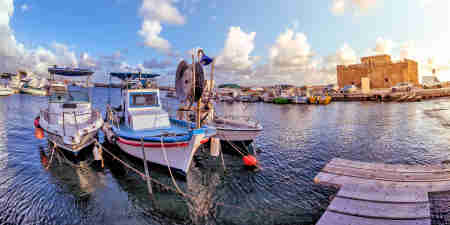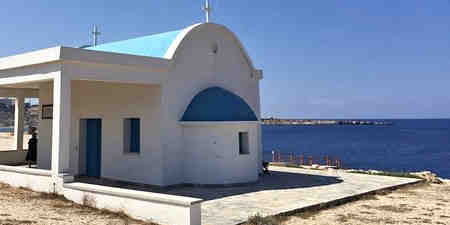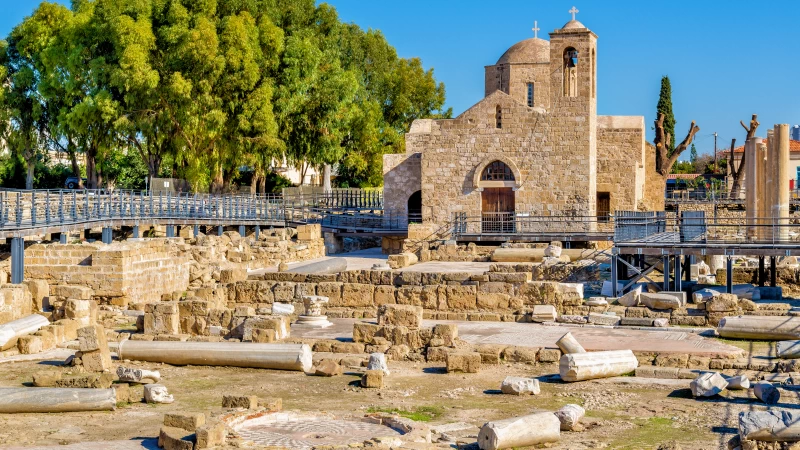Chrysorogiatissa Monastery
Located next to the village of Panayia, Panagia Chrysorogiatissa Monastery is one of the religious heritage sites of Paphos. It was founded in 1152 AD, during the rule of Manuel I Komnenos of Byzantium, by a monk called Ignatius who entered in possession of an icon of the Virgin Mary allegedly painted by St. Luke the Evangelist.
Panagia Chrysorogiatissa Monastery Boasts Its Own Winery
The Panagia Chrysorogiatissa Monastery, also spelled Chrysoroyiatissa or Chrysorroyiatissa, is a sacred temple dedicated to Our Lady of the Golden Pomegranate. Its history is intricate and wondrous. Little is known about the monastery until the visit of Russian monk Vassilios Barsky, who, upon his arrival here in 1735 found a modest church with two or three cells and monks maintaining the place through agricultural work and goat keeping. But he was impressed by the location of the monastery, in a fertile land with refreshing morning dew, quiet, and with clean air.
But the legend behind the foundation of the monastery is beautiful. An icon of Virgin Mary attributed to St. Luke was tossed into the sea to be protected against destruction in Asia Minor during the first period of the Byzantine Iconoclasm. On August 15, 1152, a monk called Ignatius who practiced not far from Moulia saw a glow on the coast and followed the light towards the sea. In the waters, he found St. Luke’s depiction of Virgin Mary. Later that night, Ignatius had a dream in which the angel of God told him to build a church to honor the Chrysoroyiatissa. The icon, encased in silver and gold, is still in the monastery today.
Panagia Chrysorogiatissa Monastery became an important pilgrimage site in time and was enriched with valuable works of art and a library full of precious books and documents. In 1821, the Turks bared the monastery of its riches. The monks rebuilt the estate, but an accidental fire in 1967 destroyed the library, the dining room, and many precious objects.
Today, the Panagia Chrysorogiatissa Monastery still guards valuable icons, crosses, Venetian chandeliers, relics, and documents in its museum, which is open to the general public.
The monastic winery is another noteworthy component of the complex. There’s evidence that wine was produced in pitharia earthware within the premises of the Panagia Chrysorogiatissa Monastery as early as 1751 AD. Part of the current building of the edifice dates from that time. In 1984, abbot Dionysios decided to produce wine in the monastic winery again. The monastery boasts about 25 hectares of vineyards cultivated with local and imported grape varieties. They make nearly fifty thousand bottles of wine annually, with plans to increase the amount in the future.
Read More
Read Less









